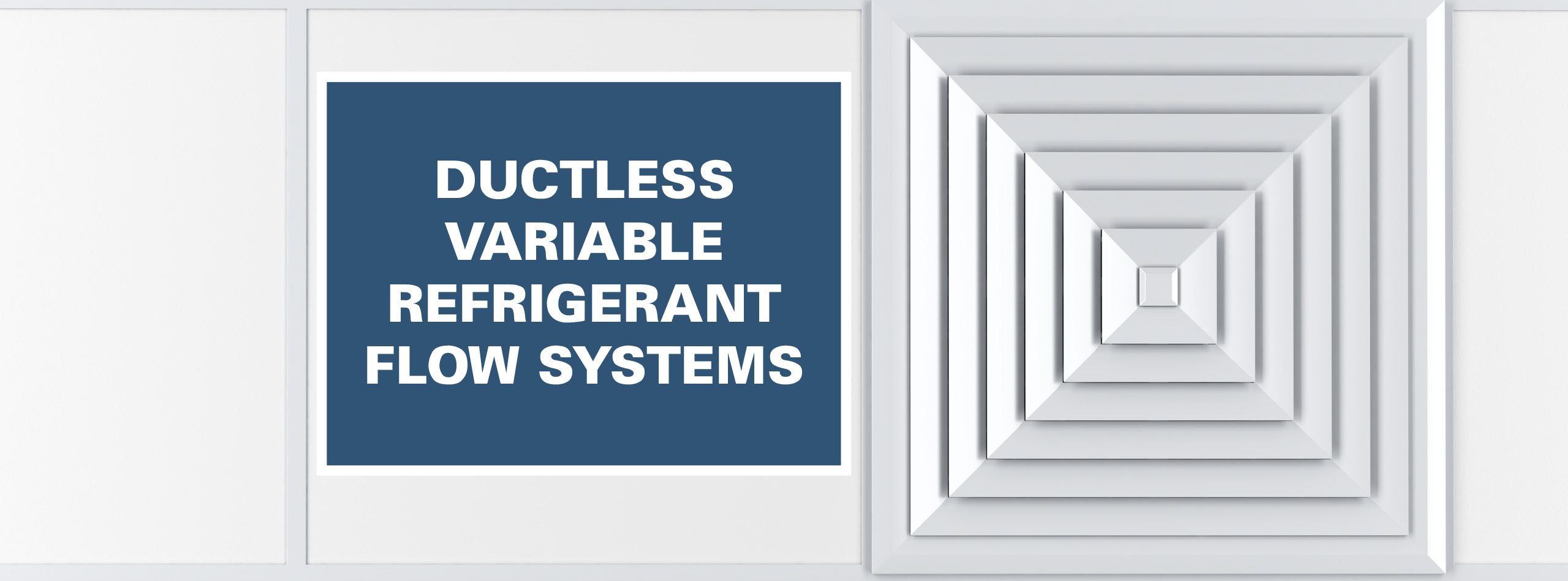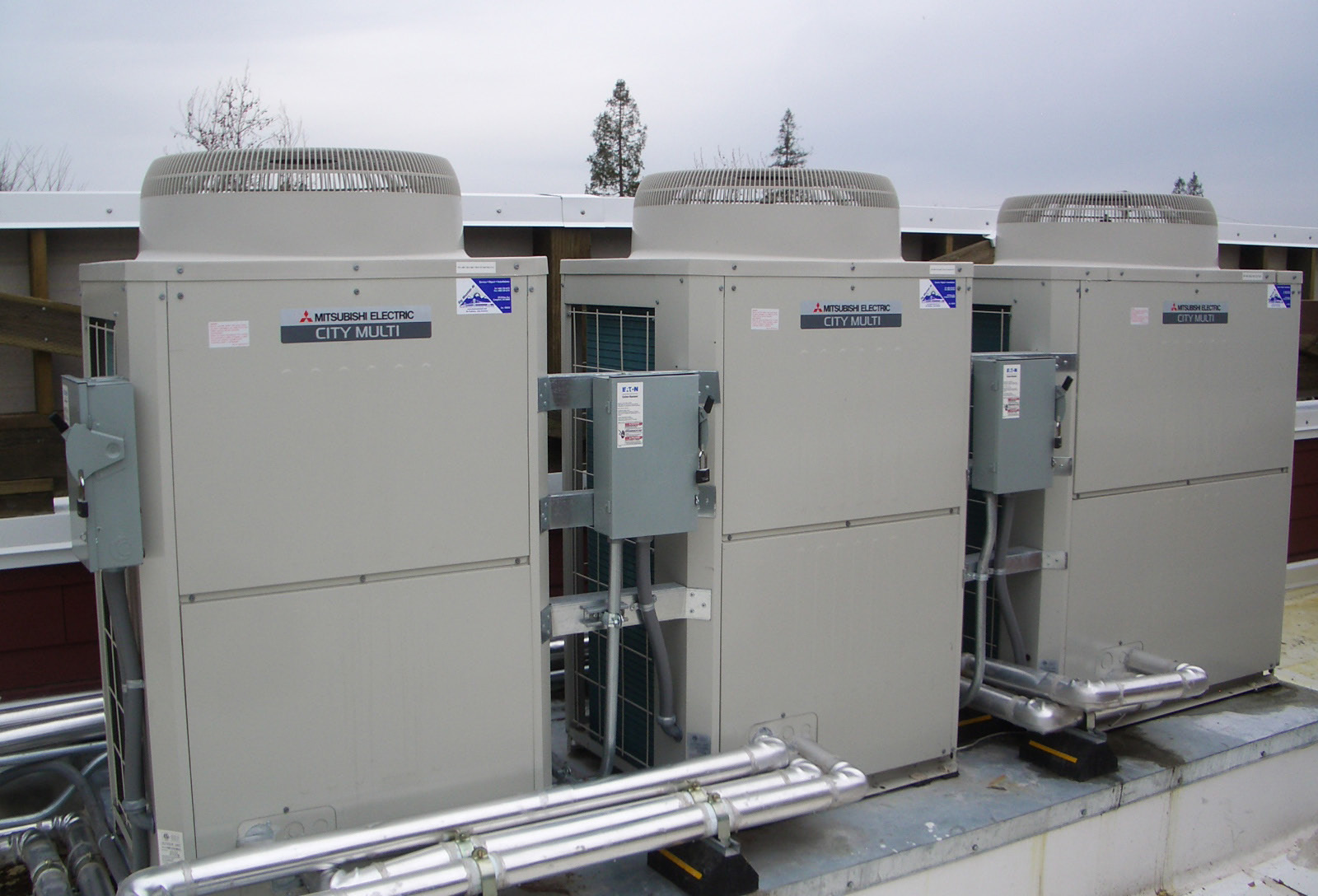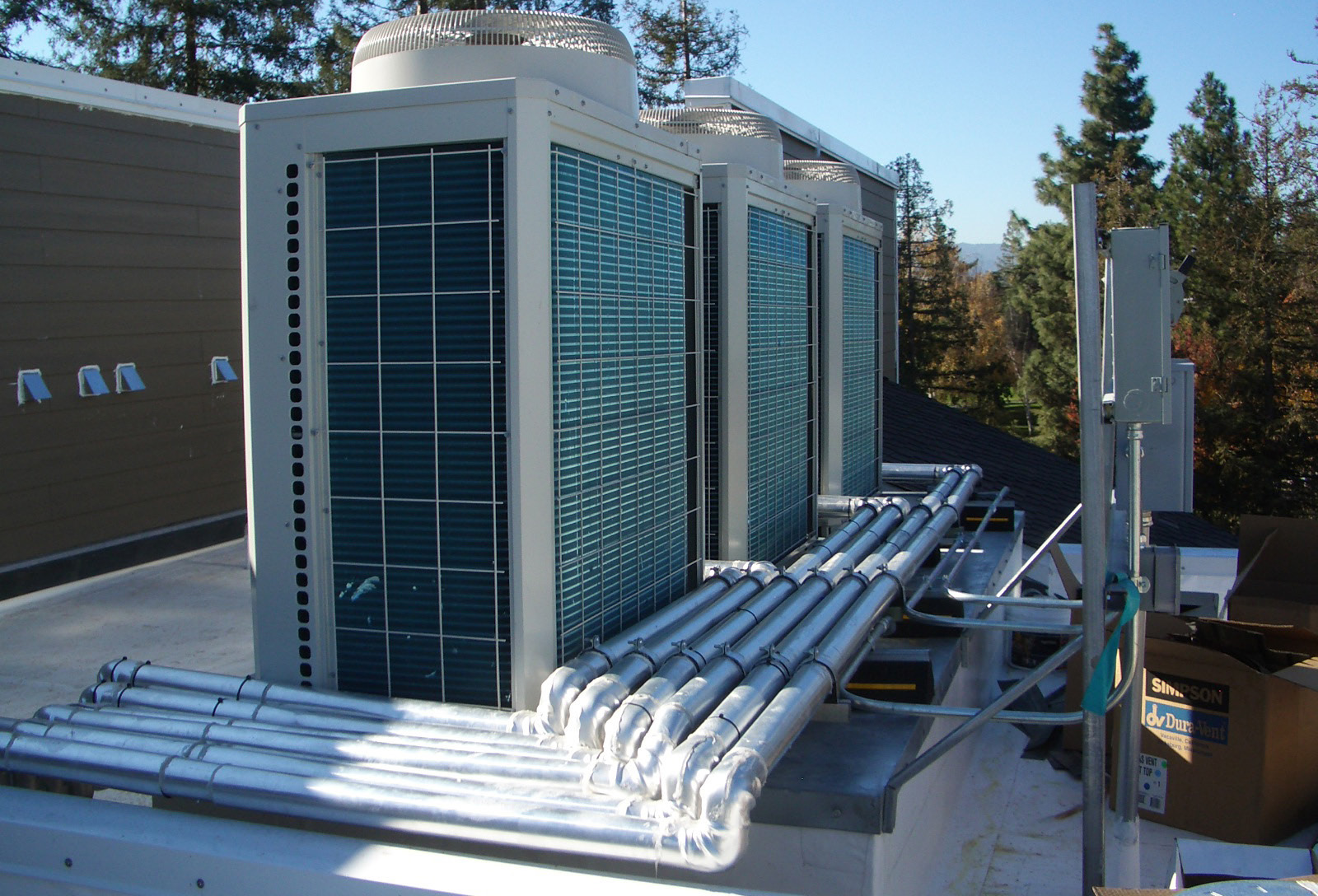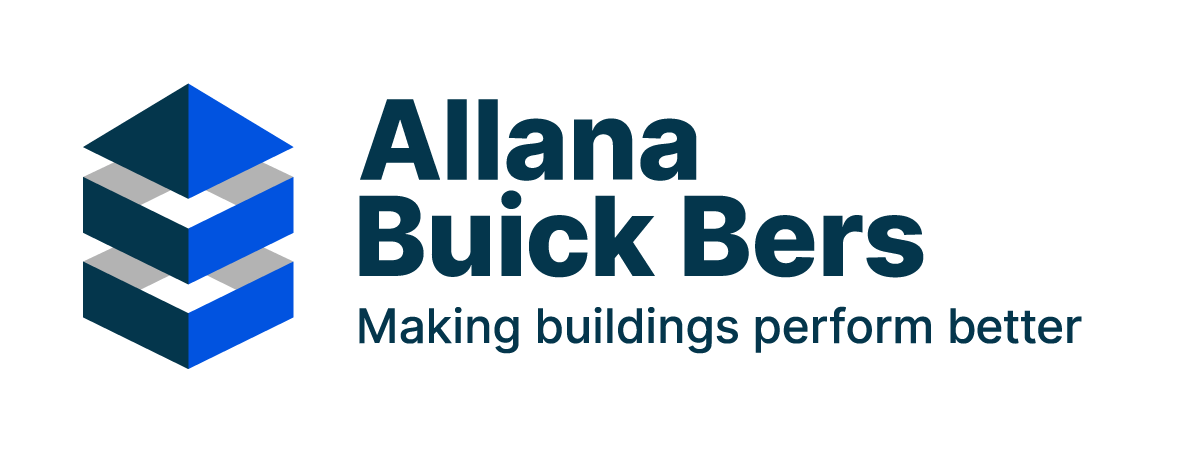
Have you always wanted to know more about Variable Refrigerant Flow Systems and how it works? Wonder if it’s a good fit for your project? Here are some of the most common questions answered by ABB’s in-house Mechanical Engineers.
VRF is a fairly new air conditioning system in the US but has been extensively used throughout Europe and Asia for more than 25 years. VRF systems provide heating and cooling simultaneously and efficiently. This technology minimizes energy waste and reduces building HVAC operational costs.
Competitive in cost, VRF systems are designed to be easily installed and will require less maintenance when compared to conventional HVAC systems. VRF systems benefit various building types and occupancies either in retrofit projects or for new construction.
How a VRF System Works?
A VRF system has the ability to simultaneously cool and heat different zones in a building. The VRF system removes the heat from the side of the building that the sun is heating and transfers the heat to the parts of the building that are cooler and need heating. As the sun moves during the day, these areas of the building that required heating and cooling will change. This migration of heating and cooling is also effected by the internal loads that change through out the day’s activities such as people moving to different areas of a building as the day progresses. Conventional HVAC systems cannot adapt efficiently to changes in solar and occupancy loads.
The VRF system adapts its outdoor unit’s compressor operation to meet the varying thermal loads of the building throughout a day and also throughout the year. Energy use is decreased by having the compressor ramping up or down in small increments to meet the diverse thermal needs of a building. A variable speed compressor is very energy efficient compared to a single speed compressor that is switched on at full bore and then stopped repeatedly to meet the thermal demand. This is comparable to driving your car on speed control versus stepping all the way down on your gas pedal and then braking to reach the speed that you want to go and then repeating the gassing and braking. Every time you turn off the compressor and then turn it back on it will require much more energy than varying its speed to meet demand. The indoor units also limit the amount of refrigerant needed by modulating the flow rate to provide the exact amount of refrigerant needed to cool or heat the room.
How Does A VRF System Stay Competitive In Cost With Other HVAC Systems?
• While individual VRF component costs might be higher, in most cases the total installed system costs are comparable to conventional HVAC systems.
• VRF systems save in construction costs by using less installation space in a building.
• VRF systems are designed to be easily installed. Installation time is less because of the fewer and smaller equipment components and the smaller size piping required.
• Down time in an occupied building is reduced when installing a VRF system because the system can be divided up into independent zones.
• Higher efficiency while operating at partial loads and the ability to provide simultaneous heating and cooling result in operational costs that are lower than other HVAC systems.
• VRF system components tend to last longer and need less maintenance. This greatly reduces life cycle costs.
Why Choose VRF Systems?
• VRF systems are highly energy efficient HVAC systems, which greatly reduces building operational costs.
• Refrigerant piping occupies much less space than ductwork that supplies cooling and heating. This is a benefit in retrofit jobs that do not have room for ductwork. This is also a benefit in new construction jobs where a lot of money is saved by decreasing the extra space requirements of a ducted system, especially in the constructed height of a building.
• VRF systems are designed to improve serviceability. Each individual indoor unit has the ability to be shut down for maintenance without shutting down the whole system. Easy to use central controls can trouble shoot problems anywhere in the system for maintenance.
• Long ductwork runs have high friction losses that result in high fan energy consumption which is eliminated in VRF systems. Ductless VRF systems also do not have the heat losses associated with long runs of ductwork.
• Cross-contamination between different areas of a building is greatly reduced with VRF systems.
• The outdoor units have small foot prints and in some cases can eliminate the use of cranes during construction to lift units to the roof top when an elevator can be used.
• Low operation noise. The indoor and outdoor units are extremely quiet compared to conventional heat pump or air handling units.
• Provides the precise amount of heating or cooling required to allow the occupants to experience consistent comfort.
• Provides opportunities for LEED credit points in designing sustainable buildings in the US. Two major areas that points can be achieved are Energy and Atmosphere and Indoor Environmental Quality.
• VRF systems benefit various building types either in retrofit or new construction.

Case Study – Rincon Gardens’ VRF System
A good example of a multi split VRF system installation is the retrofit that ABB designed at Rincon Gardens in Campbell, California Rincon Gardens is a 180,000 square foot, 3 story multi unit elderly housing complex. There are 200 residential units, a dining room, public activity areas and administrative offices.
The original building heating was provided by a hydronic baseboard system, with no air-conditioning. Retrofit of the building posed several challenges: The lack of ceiling space ruled out a ducted HVAC system. Individual room air-conditioning units were deemed energy inefficient, noisy and required exterior wall installation. The work needed to be conducted with continued occupancy of the building.
A VRF heating and cooling system offered an opportunity to achieve the goals of the project within the constraints of the existing building configuration. The outdoor heat pump units were installed on the rooftop. The low profile indoor room fan coil units fit in shallow ceiling spaces that were added to each residential unit. The small diameter refrigerant piping was easily routed through corridor ceilings and down inside standard wall spaces. Phasing of the installation work minimized disruption to the tenants. This was possible with a VRF system because of the independent control zones that could be activated without the entire system completed.
The resultant installation offers a highly efficient heating and cooling system, with individual room temperature control, central controls that offer monitoring, troubleshooting and the ability to track energy use of each tenant.
In summary, the choice of a multi split VRF heat pump system is especially suitable for existing building HVAC retrofit and upgrade projects.


CATEGORY: HVAC/Heating/Cooling
